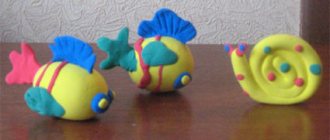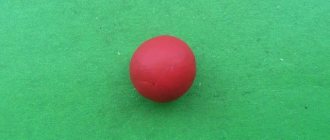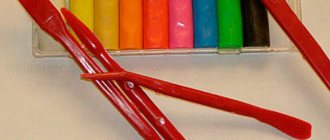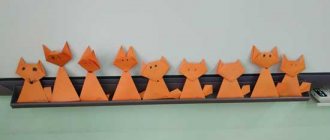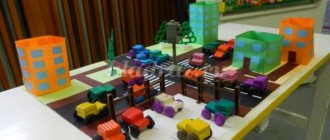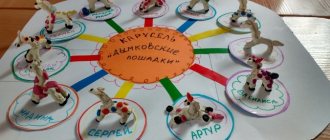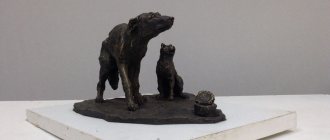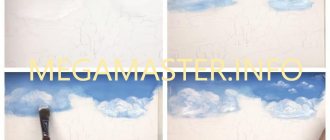Sculpting a human figure
Elena Kostina
Sculpting a human figure
Master class “ Sculpting a human figure”
In different preschool education programs, the task is to sculpt a human figure in motion . It can sound differently: “forming the ability to convey characteristic human , create expressive images ... a girl dances, children do gymnastics), etc. A problem arises in the transfer of movements if each arm and each leg are attached separately (lubricated)
.
When you try (and there may be several of them)
to change the position of your arms or legs, they may break off.
For myself, I discovered a method that not only speeds up the creation of figures , makes the figure much stronger and more stable, but also allows you to repeatedly change the position of the arms and legs, convey various movements, without fear of breaking them off.
The quality of work improves, which gives children self-confidence. Children use the saved time to decorate and detail the work. I will demonstrate this method using the example of a soldier and a boy in winter clothes.
Soldier
We roll out a thick cylinder for a tunic, a long cylinder of medium thickness for the legs, a black cylinder for boots. Roll balls for the head, arms, headdress, and details. We cut the top of the tunic and the cylinder for the boots in half.
We use our fingers to form two sleeves, rounding and stretching them. An important point: the arms and torso are one piece.
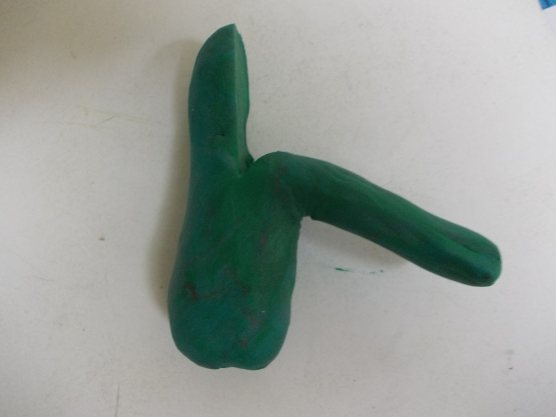
We fold the cylinder for the pants in half. This is also a very important point: the lower part of the body from the waist with the legs is obtained as a whole piece. We sharpen the lower parts of the pants. We make a dimple at the bottom of the tunic.
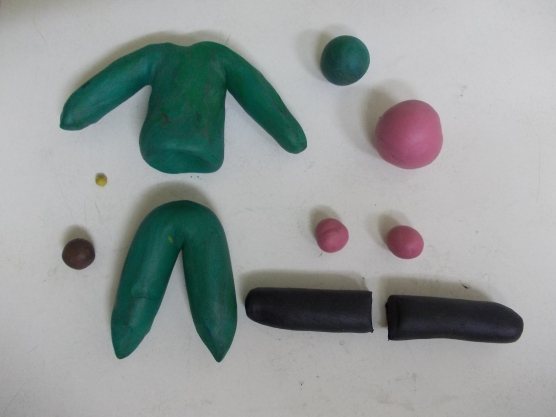
Forming “beaks”
on the head and palms. We make dimples in the sleeves, collar, boots.
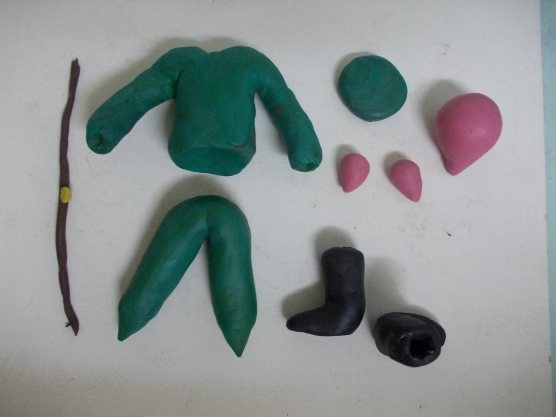
We collect the parts - the soldier is ready.
Boy in winter clothes
We are preparing a thick cylinder for a jacket, a thin long one for pants, and an egg for boots.
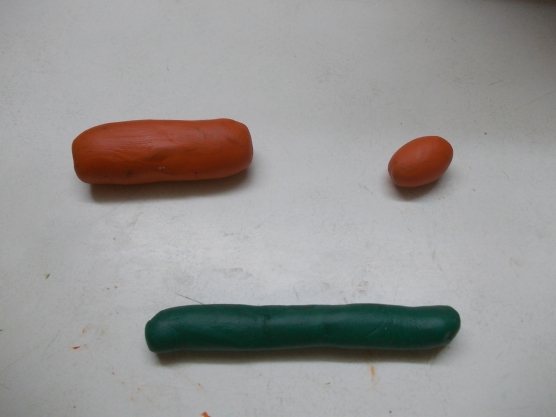
Cut the top of the jacket, cut the egg in half lengthwise, and fold the pants in half.

We make dimples in the sleeves, boots, and bottom of the jacket. We sharpen the bottom of the panties.
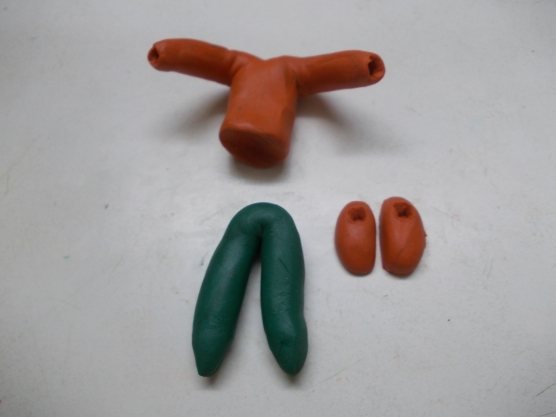
Assembling the boy, adding details. Now he can ski...
Can shovel snow...
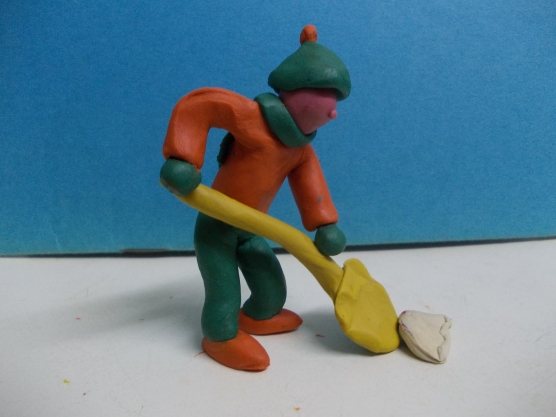
Didactic manual on sensory Dear colleagues! I present to your attention a didactic manual on sensory education. I took the idea from the magazine “Hoop” No. 3/2012 (p. 20,. Learning to draw a human figure Game “Funny People” All teachers, I think, will agree with me that sometimes it is quite difficult to teach preschoolers to draw a human figure.
Source
Preparatory stage
Children have grown up, and new techniques for working with plasticine are available to them. From sculpting on a plane, which involves creating a kind of painting, plasticine bas-reliefs on a sheet of cardboard or paper, and from simple forms (balls, lumps, figures without complex details), the children move on to three-dimensional standing and walking figures that require taking into account proportions and the laws of balance.
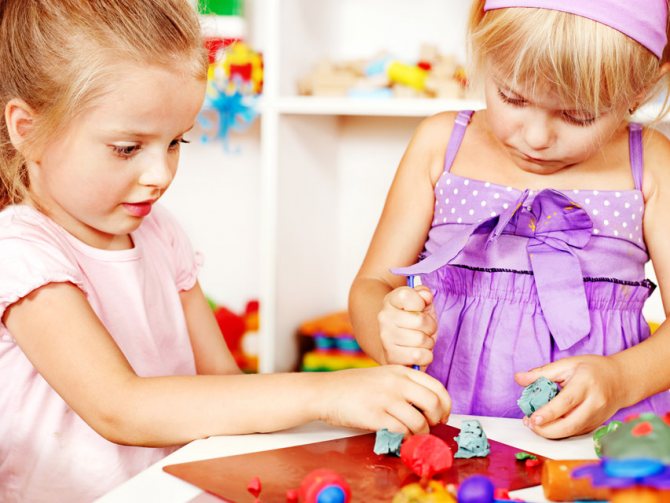
Playing with plasticine is an important part of preparing for school.
What methods of modeling from plasticine can be used
Children aged 6–7 years are already familiar with constructive (the composition is created from individual parts, like a construction set), sculptural (all parts of the figure are made from one piece) and combined methods (combination of constructive and combined). To sculpt a figure in motion, it is more convenient to use a constructive method - this way it is easier to convey small details, such as, for example, palms, facial relief, etc.
Modeling techniques
In this group, children consolidate previously mastered modeling methods, including:
- rolling out elements (creating a “ball”);
- rolling (rolling “sausages”);
- indentation, that is, creating depressions on the form with your fingers;
- flattening (making “pancakes” from balls);
- pinching (pinching a piece and flattening it with two fingers);
- pulling (pulling an element out of a piece);
- accession;
- smearing (building up elements onto the base and smearing the boundaries of the connection);
- pinching (clamping the part, but without flattening);
- stretching (stretching elements while maintaining the overall shape);
- smoothing (smooth transition of craft elements into each other).
Almost all of these methods are useful when working with the human figure.
Composition options on the theme “Man in Motion”
Modeling of a non-static figure can be presented in the following variants of themes for composition, which can be dedicated to a specific educational block:
- “Girl Plays Ball” (when studying topics related to summer fun);
- “Skier” (in the process of studying materials related to winter sports);
- “A girl and a boy are dancing” (for example, on the eve of the New Year);
- “Soldier” (this composition can be dedicated to February 23 or May 9), etc.
As can be seen from these examples, most of the options for such modeling in calendar and thematic planning correlate with the winter theme. This is explained simply: by the 2nd semester, the children repeat and consolidate all the basic techniques and methods of sculpting, which allows them to create complex designs, which include the human figure.
Preliminary work with the group
Although the technique of sculpting a human figure is relatively simple, the teacher, during classes on speech development and physical education warm-ups, first examines with children the features of a person’s posture, drawing their attention to such nuances as:
- body angle;
- turning the head;
- bend of arms and legs, etc.
In addition, even before starting to work with plastic material, the adult individualizes the process as much as possible. That is
- divides the responsibilities for preparing the workplace and the necessary tools between the guys;
- allows you to choose the color range of plasticine for crafts;
- helps determine the position of the limbs (if children are performing a composition where the pose of the figure may vary), etc.

It is advisable that the choice of color scheme for the little man’s costume remains with the child.
Motivation
Already at the stage of individualization (that is, preparation for the lesson), the motivation of the little ones begins. However, the first part of the lesson should be planned so that the kids become interested in both the result of the work and, what is very important, the sculpting process itself. To do this, the teacher can use a number of techniques.
This is interesting. The famous Italian teacher, philosopher and humanist of the late 19th and early 20th centuries, Maria Montessori, said: “Do not limit yourself to just one teaching aid, for example, cards. Cover one topic in different ways: in games, posters, books, cartoons.”
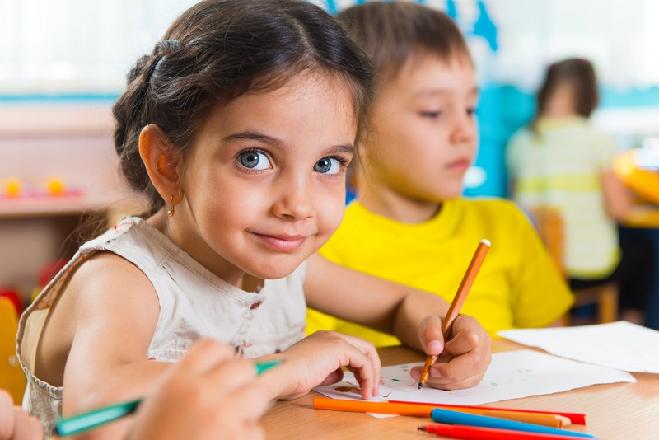
One of the options for motivation could be a preliminary drawing of a sample of a man in motion
Conversation and visibility
If we rank the most effective ways to get children to work, then, of course, conversation will take first place. The main thing is to build it correctly. Usually these are questions from an adult, which the kids answer one at a time or in chorus. For example, before creating a figure of dancing children, questions might be:
- When do people dance?
- Do you like to dance?
- How are the legs and arms of the dancers positioned when moving?
- What should a person doing dancing wear?
However, these questions cannot be speculative. Children perceive the world figuratively, so they cannot do without clarity. These could be pictures of athletes, frames from famous cartoons (for example, “Well, just wait!”), or photographs of the children themselves. If the kids are sculpting the composition “Girl Plays with a Ball,” then for motivation you can invite all the kids to repeat 2-3 exercises with the ball, and then discuss which movements were the same, which were different, and also what poses the body took.
A game
The story-based game gives the lesson a particularly interesting working atmosphere. If we talk about working on plasticine figures, then such a character, including children in work-play, can be a cartoon or book hero. For example, during a lesson on the subject of a skier’s figure, the symbol of the Sochi Olympics, Cheburashka, may come and invite the kids to create their own ski team.
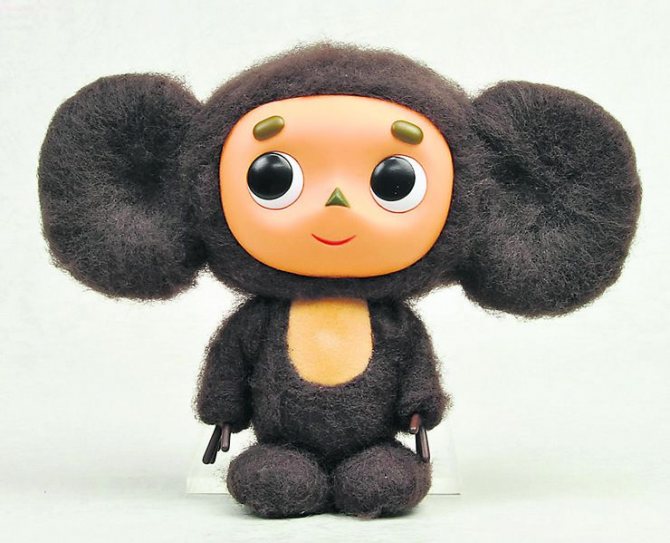
Children work in class with special pleasure if their favorite character “comes to visit” them
Poems
The rhythm and dynamics of rhymed lines also organizes the children well and puts them in a working mood.
- One day nature and people started a dispute about primacy. Storms and blizzards rushed in and covered everything up to the roofs with snow. "Hooray! - Nature rejoiced, “They can’t get through the snow, they won’t survive!..” It’s not in vain that the people have ingenuity... And people came up with SKIS!
- If you can’t sleep in the morning, the dream has run away somewhere, and you’re tempted to start dancing - So the day for dancing has come!
- I'm a military captain! I'm not afraid of a hurricane! The whole team is recruiting, We are leading the ship into the storm. It’s not in vain that we stand at our post! We will protect you, country!
